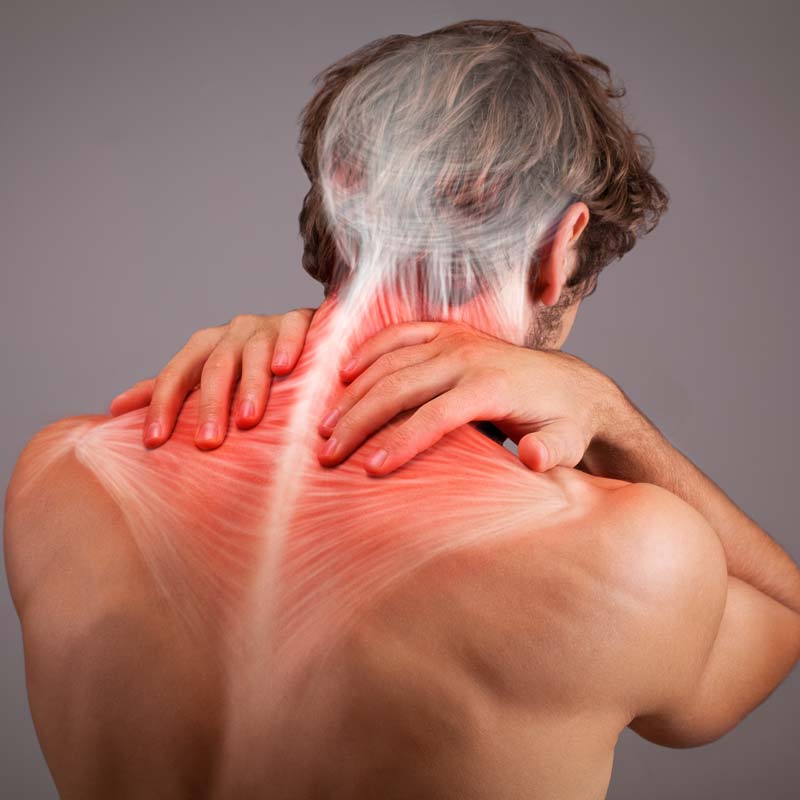Natural Methods for Managing Chronic Pain

Natural methods for managing chronic pain provide effective, non-invasive solutions without relying on medication. Chiropractic care, acupuncture, massage therapy, and physical therapy all work to address the root causes of pain, promoting healing and long-term relief. Techniques like spinal adjustments, stretching, and lifestyle changes can reduce inflammation, improve mobility, and enhance overall well-being. These natural approaches offer a holistic alternative for managing chronic pain, helping individuals regain control of their health and daily activities.
Understanding Chronic Pain
Living with chronic pain is like having an uninvited houseguest who just won’t leave. It’s persistent, annoying, and can really put a damper on your day-to-day life. But what exactly is chronic pain? Simply put, it’s pain that sticks around for longer than three months, well beyond the expected healing time for an injury or illness.
There are several types of chronic pain, including:
- Nociceptive pain (tissue damage)
- Neuropathic pain (nerve damage)
- Idiopathic pain (unknown cause)
Common causes range from arthritis and fibromyalgia to old injuries and nerve damage. Whatever the source, chronic pain can be a real party pooper, affecting everything from your mood to your ability to enjoy a good night’s sleep.
Natural Pain Relief Methods
Now, let’s talk about kicking that unwanted guest to the curb – naturally! While popping pills might seem like the quickest fix, there are plenty of natural methods that can help manage chronic pain without the potential side effects of long-term medication use.
Herbal Remedies: Nature’s Pain Relievers
Mother Nature has been in the pain relief business for centuries. Here are some herbal remedies that have shown promise in managing chronic pain:
- Turmeric: This golden spice is a natural anti-inflammatory powerhouse.
- Willow bark: The original inspiration for aspirin, it’s been used for pain relief since ancient times.
- Devil’s claw: Despite its devilish name, it’s heavenly for joint pain.
Remember, while these herbs can be effective, they’re not a one-size-fits-all solution. Always consult with a healthcare professional before starting any new treatment regimen.
Essential Oils: Aromatherapy for Pain Management
Essential oils aren’t just for making your home smell nice – they can also help manage pain. Some top contenders include:
- Lavender oil for relaxation and pain relief
- Peppermint oil for muscle pain and headaches
- Eucalyptus oil for inflammation
To use essential oils safely, always dilute them with a carrier oil before applying to the skin. And remember, a little goes a long way!
Benefits of Natural Pain Management
Choosing natural methods for pain management is like opting for a home-cooked meal over fast food. Sure, the drive-thru might be quicker, but the homemade option often leaves you feeling better in the long run.
Natural pain management methods offer several advantages over traditional pain medications:
- Fewer side effects
- Lower risk of dependency
- Often more affordable in the long term
- Can address underlying causes, not just symptoms
Let’s look at a quick case study: Sarah, a 45-year-old office worker, had been struggling with chronic lower back pain for years. After trying various medications with limited success, she decided to give natural methods a shot. Through a combination of regular yoga practice, acupuncture sessions, and dietary changes, Sarah was able to reduce her pain levels significantly within three months. She went from barely being able to sit through a workday to enjoying weekend hikes with her family.
See more: Sports Therapy: Enhancing Performance and Recovery
Lifestyle Changes for Pain Relief
Sometimes, the key to managing chronic pain is making some lifestyle tweaks. It’s like giving your life a little makeover – pain edition!
Anti-Inflammatory Diet Tips
What you put on your plate can have a big impact on your pain levels. Here’s a quick guide:
Foods to Embrace:
- Colorful fruits and vegetables
- Fatty fish rich in omega-3s
- Nuts and seeds
- Whole grains
Foods to Avoid:
- Processed foods
- Sugary snacks and drinks
- Excessive alcohol
- Red meat (in moderation is okay)
Sleep and Pain Management
Getting a good night’s sleep when you’re in pain can feel like trying to solve a Rubik’s cube blindfolded. But quality sleep is crucial for pain management. Here are some tips:
- Stick to a consistent sleep schedule
- Create a relaxing bedtime routine
- Invest in a supportive mattress and pillows
- Keep your bedroom cool, dark, and quiet
Alternative Therapies for Chronic Pain
Sometimes, thinking outside the box (or medicine cabinet) can lead to surprising results in pain management.
Acupuncture: More Than Just Pins and Needles
Acupuncture, an ancient Chinese practice, involves inserting thin needles into specific points on the body. It might sound a bit prickly, but many people swear by its pain-relieving effects. Studies have shown acupuncture can be particularly effective for chronic back pain, neck pain, and osteoarthritis.
Chiropractic Care: Aligning Your Way to Pain Relief
Chiropractors are like mechanics for your body, helping to keep everything aligned and running smoothly. Chiropractic techniques can include:
- Spinal manipulation
- Massage
- Exercise recommendations
- Ergonomic advice
Many patients find relief from chronic pain through regular chiropractic care, especially for conditions like lower back pain and neck pain.
Diet and Nutrition for Pain Management
You are what you eat, as the saying goes. And when it comes to managing chronic pain, your diet can play a starring role.
Foods that Help Reduce Inflammation
Incorporating anti-inflammatory foods into your diet is like sending a peace-keeping force to calm the riot of pain in your body. Some inflammation-fighting superstars include:
- Berries (nature’s candy with a healthy twist)
- Fatty fish like salmon and mackerel
- Leafy greens (Popeye was onto something!)
- Nuts and seeds
Hydration and Pain Management
Staying hydrated is crucial for overall health, but it can also help manage pain. Think of water as your body’s built-in lubricant, helping everything run more smoothly. Aim for at least 8 glasses a day, more if you’re active or it’s hot outside.
Exercise and Physical Activity for Pain Relief
I know what you’re thinking – “Exercise? When I’m in pain? You must be joking!” But hear me out. Regular physical activity can actually help reduce chronic pain over time.
Exercise Routines for Pain Relief
- The key is to start slow and listen to your body. Here are some pain-friendly exercises to try:
- Walking (start with short distances and gradually increase)
- Swimming or water aerobics (great for joint pain)
- Gentle yoga or tai chi
- Strength training (with guidance from a professional)
Remember, the goal is to move more, not to become an Olympic athlete overnight!
Benefits of Regular Physical Activity
Regular exercise can help manage chronic pain by:
- Strengthening muscles to support painful areas
- Improving flexibility and range of motion
- Releasing endorphins, your body’s natural pain killers
- Improving sleep quality
Mindfulness and Meditation for Pain Management
Now, let’s talk about giving your mind a workout. Mindfulness and meditation practices can be powerful tools in your pain management toolkit.
Mindfulness Practices
Mindfulness is all about being present in the moment, without judgment. It’s like hitting the pause button on your worries about pain. Try these simple mindfulness exercises:
- Body scan: Slowly focus your attention on each part of your body, noticing any sensations without trying to change them.
- Mindful breathing: Focus on your breath, noticing the sensation of each inhale and exhale.
Meditation Techniques
Meditation might conjure images of monks sitting cross-legged for hours, but it doesn’t have to be that intense. Start with just a few minutes a day of quiet reflection. You can try:
- Guided meditations (plenty of free apps available)
- Loving-kindness meditation
- Visualization techniques
Benefits of Mindfulness and Meditation
Regular mindfulness and meditation practice can:
- Reduce stress and anxiety associated with chronic pain
- Improve pain tolerance
- Enhance overall well-being and quality of life
Remember, managing chronic pain naturally is a journey, not a destination. It might take some time to find the right combination of techniques that work for you. But with patience and persistence, many people find significant relief through these natural methods.
At SpineWorks Chiropractic, we’re committed to helping you navigate your chronic pain journey. Our team of experienced chiropractors and pain management specialists offers:
- Chiropractic care
- Postural Correction
- Sports Therapy + Massage
- Digital X-Rays + Postural Analysis
Remember, you don’t have to face chronic pain alone. We’re here to support you on your journey to a more comfortable, pain-free life. Don’t hesitate to reach out – your body will thank you!




